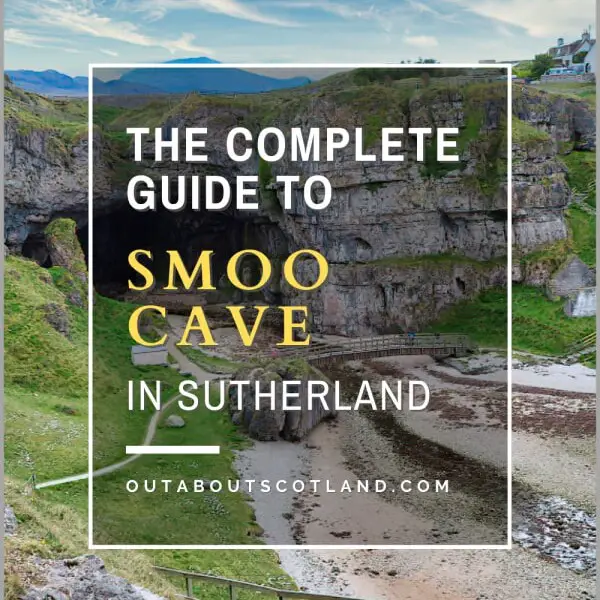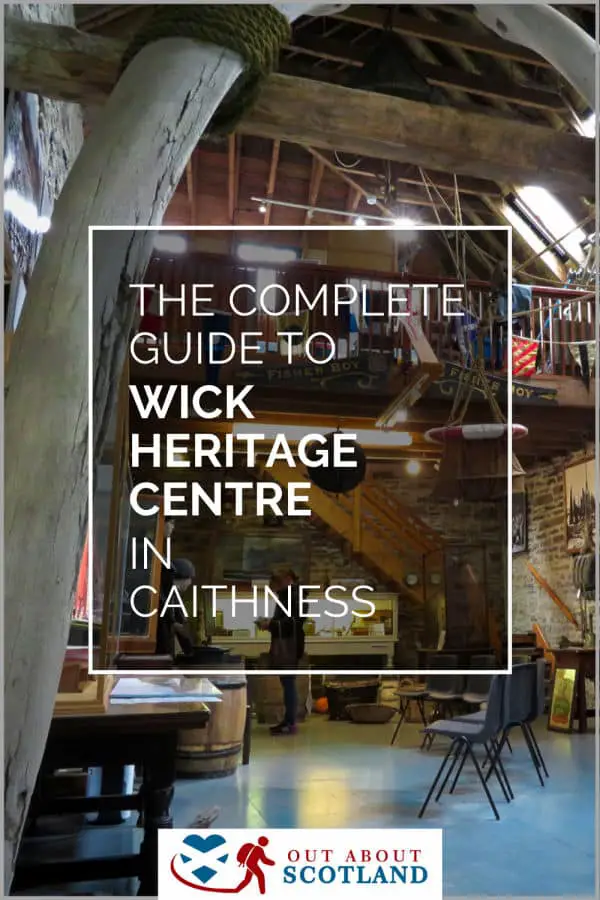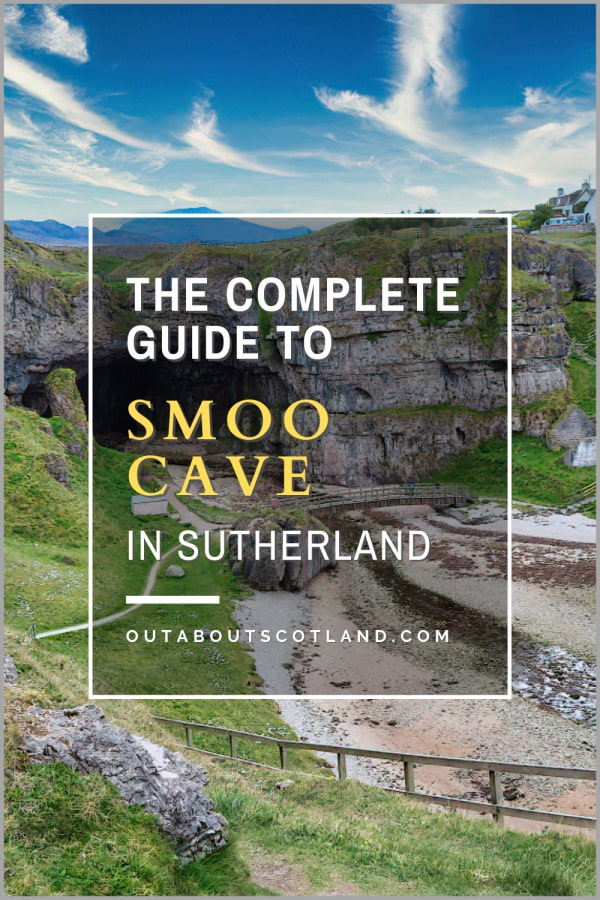Smoo Cave is a dramatic and spectacular sea cave located near the village of Durness in the county of Sutherland, on the northwest coast of Scotland. It’s set into the limestone cliffs of the area and is one of the largest and most impressive coastal caves in the United Kingdom, notable for its size, history, and geological formations.
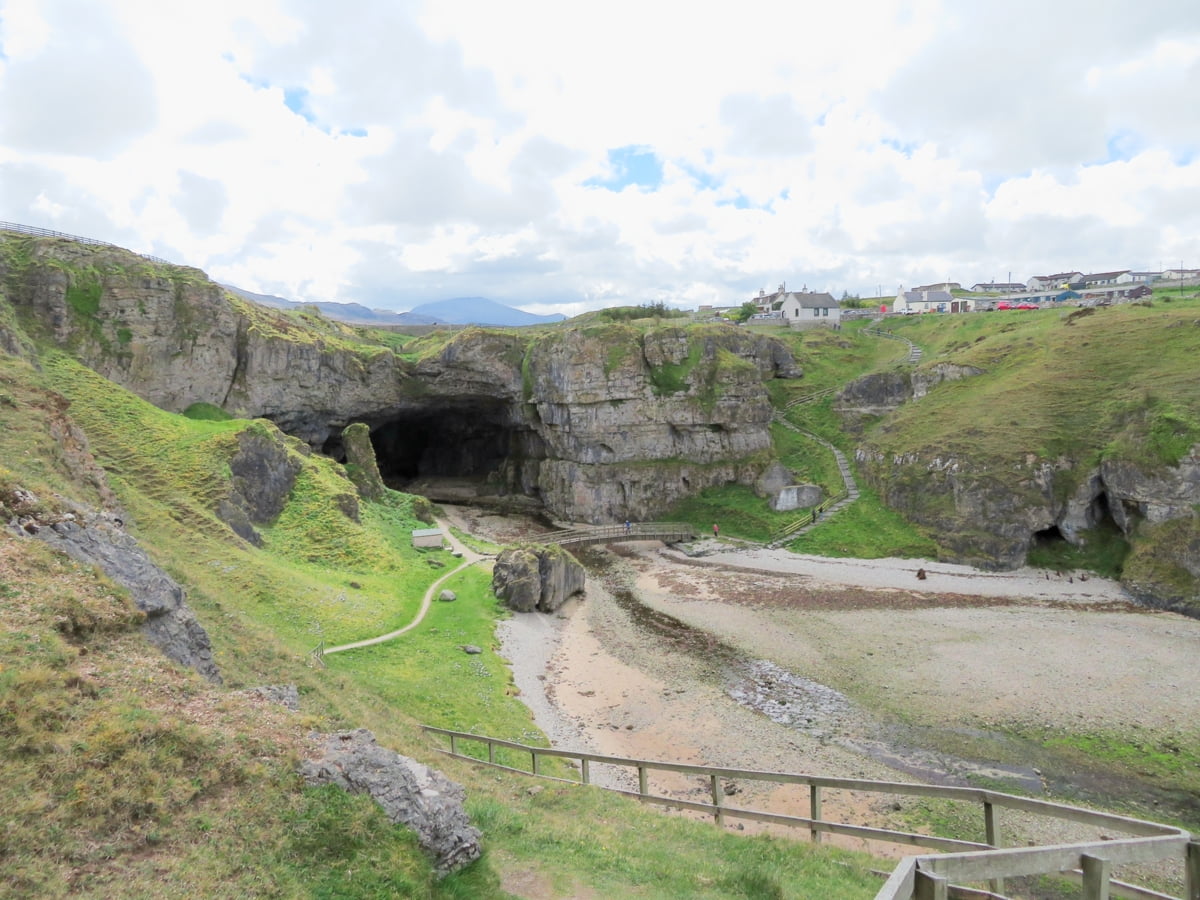
| Address: | Durness, Sutherland, IV27 4QB |
| Opening Hours: | The cave is accessible all year. Cave tours operate - June, July, August 10 am - 5 pm April, May, Sept, Oct 11 am - 4 pm Nov - March no tours |
| Admission Price: | Free to enter the main cave entrance. Cave tours cost £10 per adult and £5 per child. |
| Parking: | Free car park on-site |
| Contact: | 01971 511704 |
| Facilities: | Toilets in the car park |
| Photos: | Virtual Tour YouTube Video |
Overview
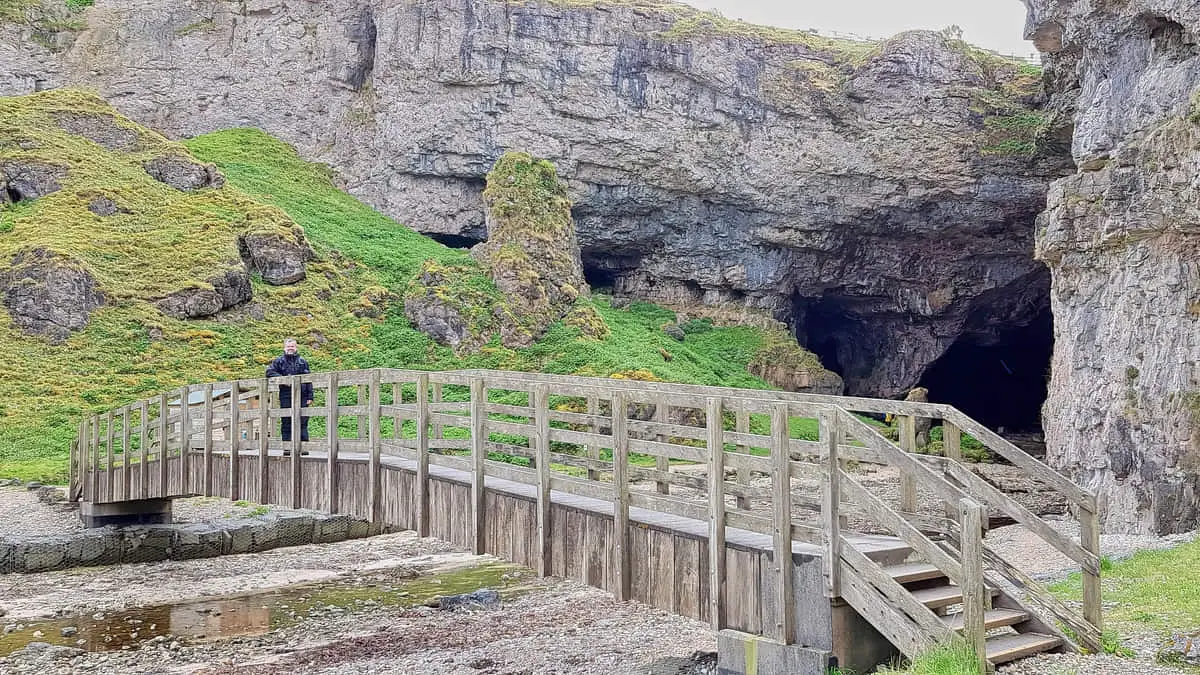
Smoo Cave is a captivating natural wonder that combines both sea and freshwater caves. This geological marvel is famed for its impressive waterfall and extensive limestone formations.
Smoo Cave in the far northern Highlands is arguably one of, if not the, most impressive natural wonders in Scotland. This is a cave that’s monumental in size, and the cave entrance is the largest in Britain – something you’ll only appreciate once you visit it.
To get to Smoo Cave, head towards the village of Durness (the most northwesterly village on the Scottish mainland) and stop at the car park on the village’s outskirts. From there, you can descend the path from the top of the limestone cliffs to the tidal gorge at the bottom, where you’ll find the main chamber. The cave entrance has to be one of the most photo-worthy natural attractions in Scotland, with a roof that towers 50 feet overhead and a cavern that extends into the rocks for over 150 feet.
You can walk around the main chamber for free, but to get the most out of a visit you’ll need to join one of the tours that descend deeper into the underground network of chambers. Although your visit shouldn’t take much more than one hour, you’ll discover some fascinating facts as you venture into the cave, courtesy of the tour guide.
For instance, one of the unique features of Smoo Cave is the fact that part of it has been eroded by the sea while the rest has been eroded by freshwater, making it the only cave of its type in Britain that has been formed this way.
Another interesting fact is the name ‘Smoo’ which is thought to derive from an old Norse word meaning ‘hiding place’. During the time that Vikings were pillaging Scotland, the most widely used form of transport was the sea, and this enormous cave would have been the perfect escape for Vikings who wanted to escape revenge attacks by angry locals.
Another fact is that excavations have shown that the caves were inhabited even before the Vikings, with some human remains being unearthed that date back at least 5,000 years from the earliest days when tribespeople settled in this part of Scotland.
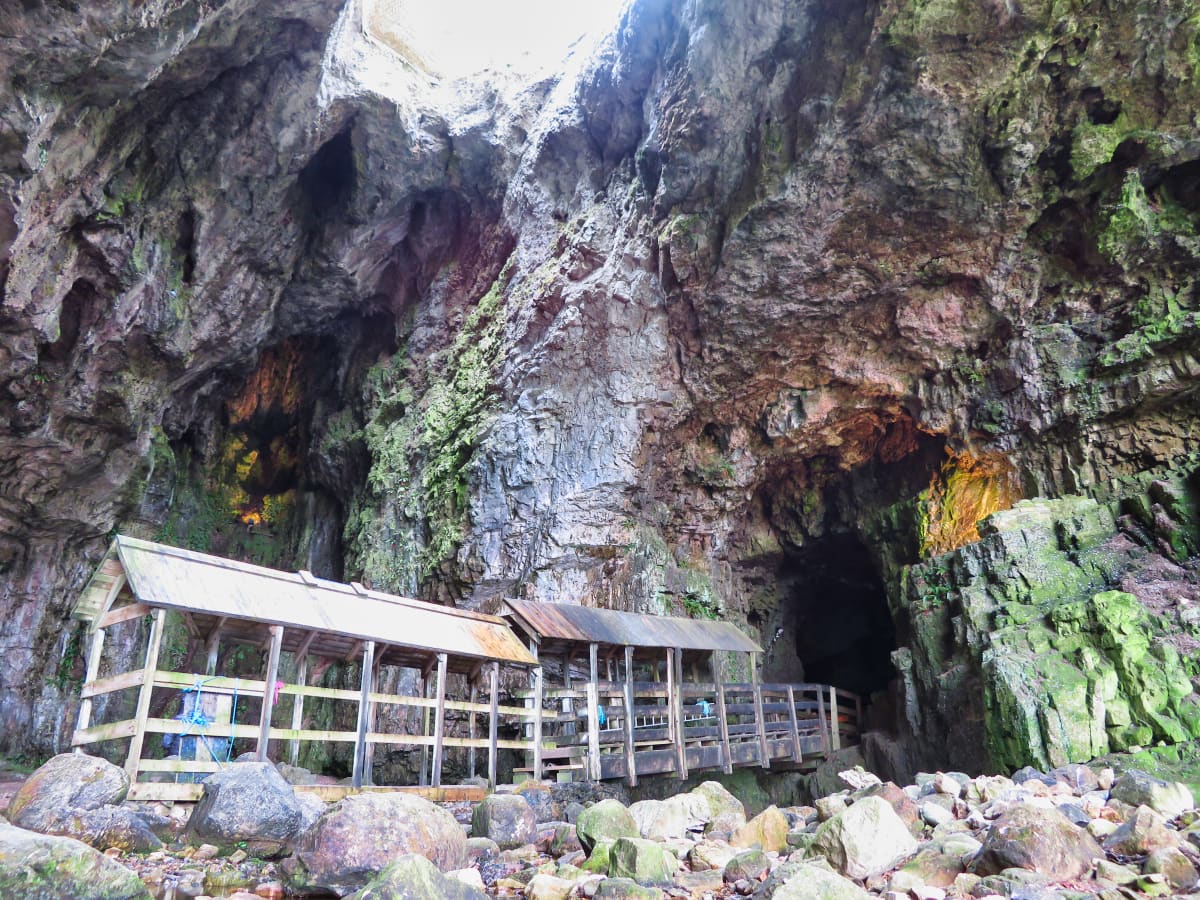
The Highlights
1: You can visit for free if you choose not to take the tour, but I recommend joining as it only costs a few pounds and it’s the only way to look inside the inner chamber.
2: Inside the cave, visitors can see a stunning waterfall created by the Allt Smoo burn (stream), which drops into the cave through a sinkhole.
3: The cave’s massive main chamber, which the sea formed, is about 40 meters wide and 15 meters high. It’s easily accessible through a walkway and a set of stairs leading down from the roadside.
Visiting Tips
1: Try to time your visit after a heavy downpour as the freshwater waterfall is spectacular.
2: There are cafés in Durness, but if the weather is warm enough, I recommend taking a picnic and sitting near the clifftops for an amazing view. Toilets are located in the parking lot.
3: The initial part of the cave is easily accessible, and it’s a popular spot for tourists who can explore without any special equipment. However, further exploration of the deeper chambers requires climbing down steps into a dinghy, which may not be possible for disabled visitors.
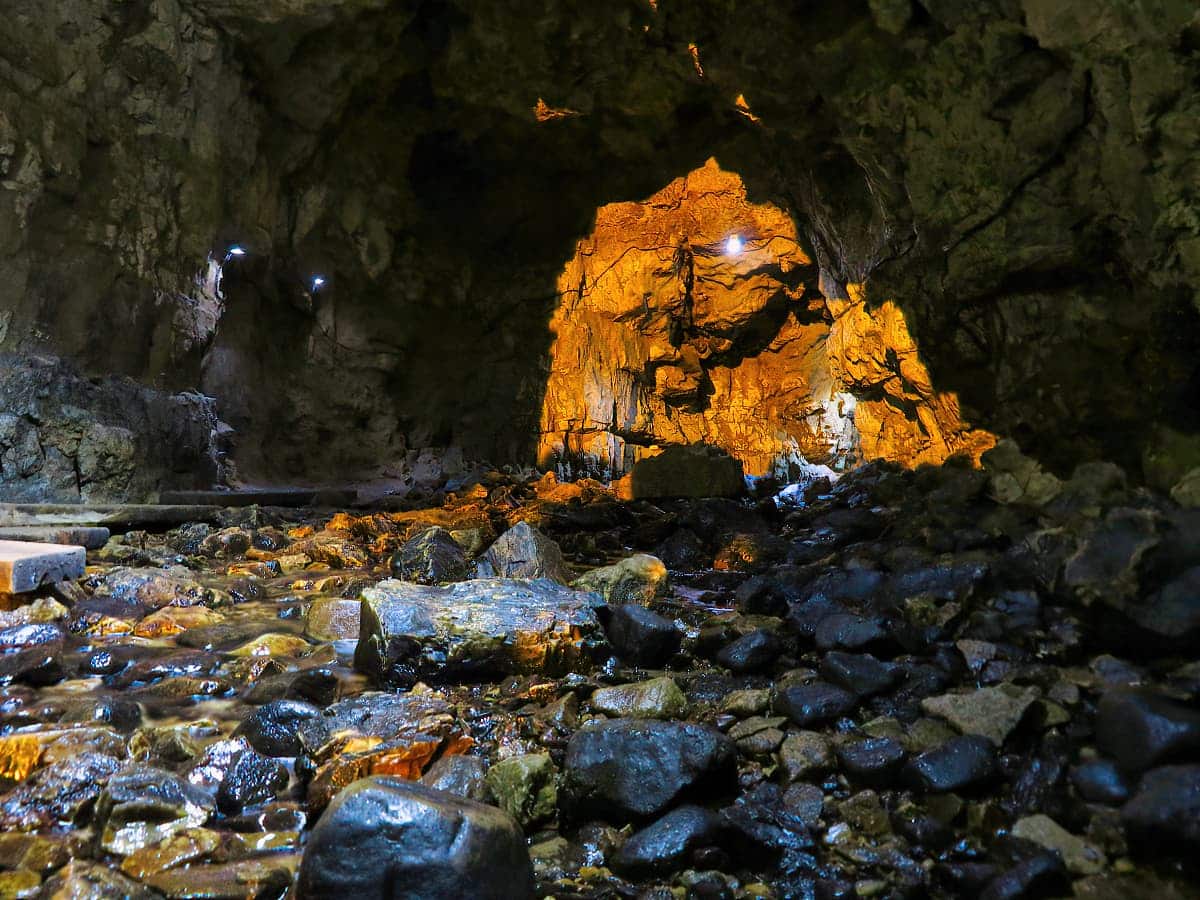
Tourist Information
The second chamber is a truly remarkable place due to the waterfall that cascades 80 feet from a hole in the cave roof. After a downpour, the water thunders down and it’s so loud you’ll struggle to hear yourself talk, but if you visit after a dry spell you’ll see the pool in another light entirely, with the water’s surface appearing almost glass-like.
There’s a wooden platform overlooking the waterfall where you’ll be able to take a few photos, after which the tour begins by descending a small set of steps to a small dinghy that will take you to the third chamber. It’s just a short walk to the third chamber, but it’s an enjoyable experience as the guide will explain the geology of the caves as well as their cultural history.
One of the guides I spoke to said he was slowly but surely excavating an alternate entrance into the inner chamber and that one day it might be possible to venture even deeper. But as far as the current tour goes, you’ll be in and out in around 30 minutes.
However, after exiting Smoo Cave you’ll find a very enjoyable walk on a path to the right of the entrance that heads around the promontory, which, in my opinion, is every bit as enjoyable as exploring the cave is. It’s not a long walk by any means – plan an hour for the complete circuit – but it’s a great way to see the gorgeous Sutherland coastline, and it’ll nicely round off a visit to this incredible natural attraction.

Things to Do
Cave Exploration: Smoo Cave is a geological wonder, with three chambers that you can explore. The first chamber is the largest and can be explored on foot. The second and third chambers are only accessible via a short boat trip. The unique formations, stalactites, and waterfall inside the cave make this a must-see attraction.
Guided Tours: Join the guided tours offered at Smoo Cave. These tours not only allow you to explore the cave safely but also provide a wealth of information about the cave’s formation, history, and legends. It’s a great way to see one of Scotland’s most interesting natural wonders.
Wildlife Spotting: The area around Smoo Cave is a haven for wildlife. Keep an eye out for seals basking on the rocks as well as a variety of seabirds. If you’re lucky, you might even spot a white-tailed eagle soaring overhead. Don’t forget to take your binoculars (link to binocular reviews).
Photography: With its unique geological formations, Smoo Cave is a paradise for photographers. Whether you’re a professional or an amateur, you’ll find plenty of opportunities to capture some amazing shots inside the cave. Due to the lack of light, you may find that a tripod comes in handy. This is my tripod (Amazon link) which I highly recommend.
Hiking: There are several scenic coastal trails near Smoo Cave. These trails offer stunning views of the rugged coastline and the North Atlantic Ocean. There’s a nice wee trail around the promontory on the east side of Smoo Cave; just make sure you wear waterproof walking boots (link to boot reviews).
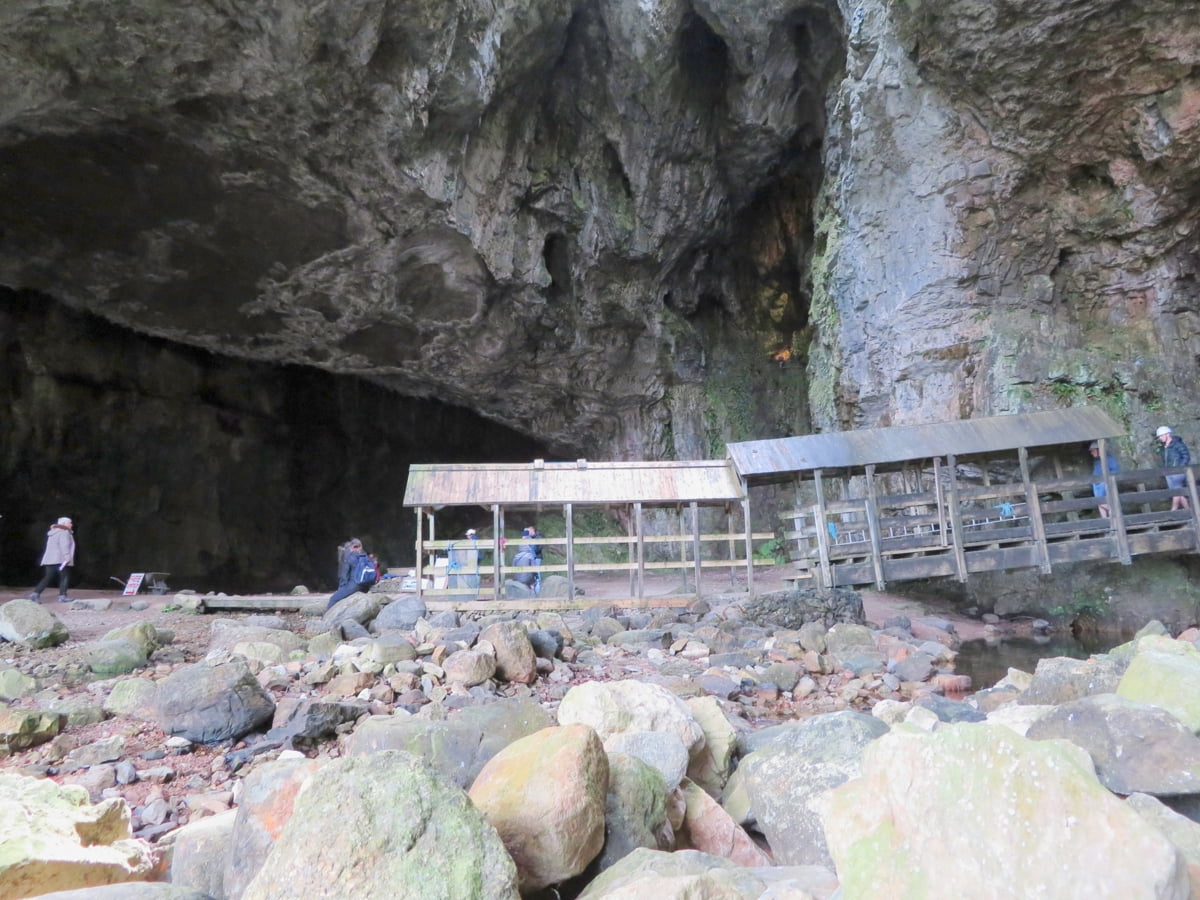
Things to Do Nearby
Balnakeil Beach. Lairg IV27 4PX. 5-minute walk.
A wide, sweeping stretch of golden dunes overlooking the Kyle of Durness and the Achiemore peninsula. Parking is available near the ruins of the historic Balnakeil Church.
Balnakeil Craft Village. 21E Craft Village, Balnakeil, Durness, Lairg IV27 4PT. 3-minute drive.
An independent craft village located near the village of Durness. Local artists sell a variety of artworks including pottery, paintings and woodwork. There is a café on site.
Sango Bay. 2010 A838, Lairg IV27 4QA. 2-minute drive.
A scenic beach with huge sea stacks. The beach is renowned for the crystal clear sea in the bay which is ideal for swimming and snorkelling. There are clifftop walks along the coastline and there are several campsites nearby.
Durness. A838, Durness, Lairg IV27 4PN. 3-minute drive.
A small country village that is lightly populated but frequently visited thanks to its central location that offers access to the coastline. There is a store (one of the few in the area) in the village centre.
Ceannabeinne Beach, A838, Lairg IV27 4QE. 5-minute drive.
The popular beach draws visitors to its clean white sand and crystal-clear sea. Kayakers and those who are brave enough to swim to nearby Eilean Hoan island frequently use the shallow water.
Frequently Asked Questions
Are dogs allowed in Smoo Cave?
The paths down to the cave (and the area around the first chamber) are dog-friendly. It’s not possible to take dogs on the boat trip to the inner chambers.
How long is the Smoo Cave walk?
A visit to Smoo Cave including a tour of the inner chamber will take approximately 1 hour.
Do you have to book Smoo Cave?
Smoo Cave is accessible without booking as the main chamber is open 24/7, 365 days a year. To visit the inner chamber, visitors must book a tour which are held from 1st April to 31st October. Tours can be paid for inside the main chamber.
Is there parking at Smoo Cave?
There is a free car park and public toilets on the A838 above the cave. There is another pay and display car park 600 feet west of the cave entrance on the A838.

